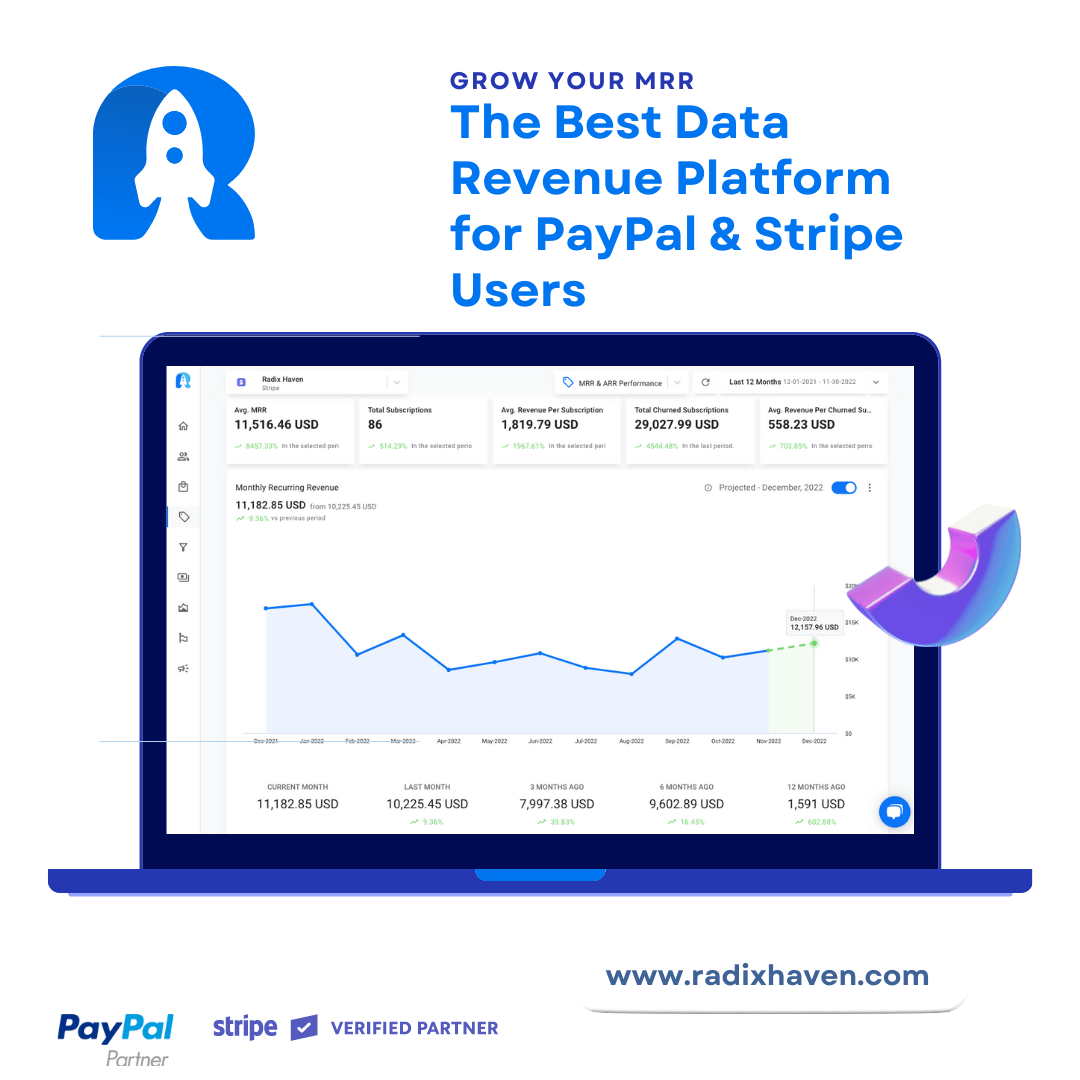As a business owner, understanding your revenue streams is critical. One metric that can help you get a handle on your revenue is monthly recurring revenue (MRR). In this brief article, we will provide a beginner’s guide to MRR analysis, so you can start leveraging this metric to drive business growth.
What is MRR Analysis?
MRR analysis is a method of tracking and measuring revenue from subscription-based products or services. This metric is calculated by multiplying the number of subscribers by the average monthly fee charged for your product or service. It provides a clear picture of your monthly revenue stream, making it an essential metric for businesses that offer subscription-based products or services.
Why is MRR Analysis Important?
MRR analysis can help businesses make informed decisions about pricing strategies, growth plans, and overall revenue goals. Understanding MRR trends over time can reveal whether your business is growing or stagnating, and provide insights into what changes you can make to improve revenue.
For example, if your MRR is consistently increasing, you may want to consider expanding your product line, investing in marketing, or increasing prices. On the other hand, if your MRR is declining, it may be time to re-evaluate your product offering, adjust your pricing, or focus on retention efforts.
MRR analysis can also help businesses identify trends in churn rate, which is the rate at which customers cancel their subscriptions. A high churn rate can negatively impact MRR and signal that there may be issues with your product or service offering. By analyzing MRR alongside churn rate, businesses can identify potential areas for improvement and take action to retain customers.
How to Calculate MRR
Calculating MRR is relatively straightforward. To determine your MRR, you’ll need to know the total number of subscribers and the average monthly fee for your product or service. Once you have this information, you can calculate your MRR using the following formula:
MRR = Total number of subscribers x Average monthly fee
For example, if you have 500 subscribers paying an average of $50 per month, your MRR would be:
MRR = 500 x $50 = $25,000
This calculation assumes that all of your subscribers are paying the same monthly fee. If your pricing structure is more complex, you may need to adjust the formula to account for different pricing tiers or discounts.
Tracking MRR Trends
Once you’ve calculated your MRR, it’s essential to track trends over time. This can be done by creating a simple spreadsheet or using a more robust tool like a business intelligence platform or customer relationship management system.
Tracking MRR trends over time can help you identify changes in your revenue stream and make informed decisions about pricing, product development, and customer acquisition. It’s essential to regularly review MRR data to ensure that you’re on track to meet your revenue goals.
Improving MRR
There are several strategies businesses can use to improve their MRR. One of the most effective ways to boost MRR is to focus on customer retention. By reducing churn and retaining customers, businesses can increase the lifetime value of each customer and improve overall revenue.
Another strategy is to increase prices. While raising prices can be a delicate balance, it can be an effective way to boost MRR if done strategically. For example, if your business has a loyal customer base and offers a high-quality product or service, customers may be willing to pay more for it.
Additionally, businesses can focus on expanding their product offering. By offering complementary products or services, businesses can increase the value of each customer and potentially increase MRR. However, it’s important to ensure that new products or services align with your core offering and meet the needs of your target audience.
Using Radix to Analyze MRR
While calculating and tracking MRR is relatively straightforward, analyzing MRR data can be more complex. To get the most out of your MRR analysis, it’s important to use a tool that can help you visualize and understand your data.
Radix is a powerful business intelligence platform that can help you analyze your MRR data and boost your overall KPIs. With Radix, you can easily track MRR trends, analyze churn rate, and identify areas for improvement.
Radix offers a variety of features designed to help businesses make informed decisions based on their MRR data. For example, Radix can help you identify your most valuable customers, analyze customer behavior, and forecast revenue trends.
By using Radix to analyze your MRR data, you can gain a deeper understanding of your revenue streams and make data-driven decisions to drive business growth. Whether you’re a small business owner or a large enterprise, Radix can help you take your MRR analysis to the next level.

Conclusion
MRR analysis is a critical metric for businesses that offer subscription-based products or services. By tracking MRR trends over time, businesses can identify areas for improvement, make informed decisions about pricing and product development, and boost overall revenue.
While calculating MRR is relatively straightforward, analyzing MRR data can be more complex. That’s why it’s important to use a tool like Radix to help you visualize and understand your data.
Whether you’re just starting out with MRR analysis or you’re looking to take your analysis to the next level, Radix can help you achieve your goals. With Radix, you can analyze MRR trends, identify areas for improvement, and boost your overall KPIs. So why wait? Start analyzing your MRR data with Radix today and take your business to the next level.





